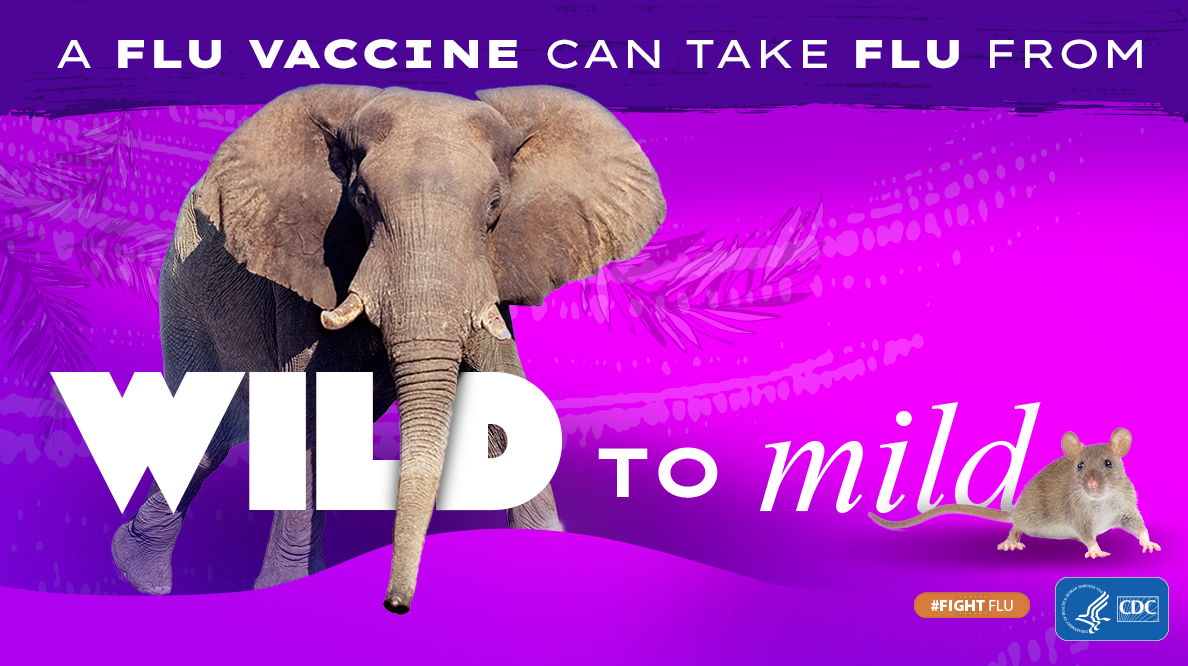In an effort to rebrand and rightsize expectations on the seasonal influenza vaccine, the Centers for Disease Control and Prevention (CDC) late last week launched a new campaign, called “Wild to Mild.”
Decorated with pictures of ferocious wild animals paired against mild house pets, the campaign portrays the flu shot as a way to lessen severity of illness, and not necessarily prevent the virus.
"The intent of the Wild to Mild campaign is to reset public expectations around what a flu vaccine can do in the event that it does not entirely prevent illness," the CDC said. "Participants found this information useful and even motivational in consumer testing.
CDC has expanded its vaccine effectiveness work to include looking at how well flu vaccine works at preventing serious outcomes.
"CDC has expanded its vaccine effectiveness work to include looking at how well flu vaccine works at preventing serious outcomes, like emergency department visits and hospitalizations," the agency added. "This work has contributed to a strong and growing body of evidence that flu vaccination reduces the risk of serious outcomes in people who get vaccinated but still get sick."
VE in recent years has dipped below 50%
In recent years, the CDC has moved away from only focusing on flu vaccine efficacy (VE) in preventing illness, as data has shown VE varies dramatically year to year. In 2021-2022, the CDC said the flu vaccine was only 36% effective against the circulating strain of H3N2.
Moreover, VE that year was very limited among those ages 50 and older.
"We were unable to detect statistically significant protection against laboratory-confirmed influenza among adults aged 50 years and older," the CDC said in an analysis of the 2021-2022 flu vaccine published last December."Detection of statistically significant VE below 30% with high vaccine coverage requires a larger sample size than we were able to enroll this season."
The CDC now officially reports a general VE of between 40% and 60% among the overall population during seasons when most circulating flu viruses are well-matched to those used to make flu vaccines.
Flu shot season starts now
The CDC recommends everyone 6 months and older get a seasonal flu shot, preferably in September and October. Pregnant women who get vaccinated can protect their newborns with passive immunity, something the CDC is strongly emphasizing this season.
The agency said in recent weeks, influenza A(H1N1) and influenza B viruses have been detected at low levels in the United States.
Recent data from South American countries, which have already experienced this year's flu season, show vaccination reduced flu hospitalizations against the predominant flu viruses— influenza A(H1N1)—by 55% and against influenza B viruses by 46%.
This week the World Health Organization virus strain selection committee meets to recommend the strains to include in the Southern Hemisphere's 2024 flu season.





















